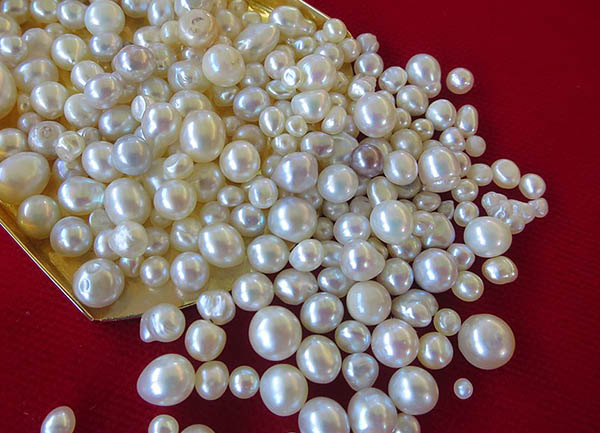The Bahrain Institute for Pearls and Gemstones (DANAT) is teaming up with the Massachusetts Institute of Technology (MIT) to explore advanced methods to establish a natural pearl’s area of origin and method of growth.
MIT.nano, MIT’s open-access center for nanoscience and nanoengineering, will be the organizational home for the project, where MIT associate profession Admir Mašić and his team will utilize the facility’s state-of-the-art tools to study a pearl's morphological, micro-structural, optical and chemical properties.
DANAT is a gemological laboratory specializing in the testing and study of natural pearls as a reflection of Bahrain’s pearling history and desire to protect and advance Bahrain’s pearling heritage, which dates back to the 5th millennium BC.
"Pearls are extremely complex and fascinating hierarchically ordered biological materials that are formed by a wide range of different species,” said MIT associate professor Admir Masic. “Working with DANAT provides us a unique opportunity to apply our lab’s multi-scale materials characterization tools to identify potentially species-specific pearl fingerprints…"
Petroleum production and refining currently accounts for 60% of Bahrain's exports, but until the early 1930s, this island kingdom just off the Arabian Peninsula drew its wealth from the natural pearls that propagated the abundant oyster beds that hug the nation's coast. Bahrainis would free dive to collect oysters from the sea floor.
On June 2, 1932, oil was discovered in Bahrain, and that new natural resource — combined with competition from Japan's lower-priced cultured pearls — sent Bahrain's natural pearl industry into a tailspin.
Now, more than 90 years later, Bahrain is looking to reinvigorate its natural pearl industry. Its pearl beds are said to be larger than Manhattan.
Natural pearls are exceedingly rare because they are created by mollusks randomly, without human intervention. When a grain of sand or similar irritant gets between the mollusk’s shell and its mantle tissue, the process begins. To protect itself, the mollusk instinctually secretes multiple layers of nacre, an iridescent material that eventually becomes a pearl.
It is estimated that a pearl will naturally form in only one in 10,000 oysters.
Cultured pearls, by contrast, are created with human intervention — when a bead is embedded inside the body of the mollusk to stimulate nacre secretion.
"Today the world knows natural pearls and cultured pearls. However, there are also pearls that fall in between these two categories," said DANAT's chief executive officer Noora Jamsheer. "DANAT has the responsibility, as the leading gemological laboratory for pearl testing, to take the initiative necessary to ensure that testing methods keep pace with advances in the science of pearl cultivation.”
Credit: Image by Angela Manthorpe, CC BY-SA 4.0, via Wikimedia Commons.

